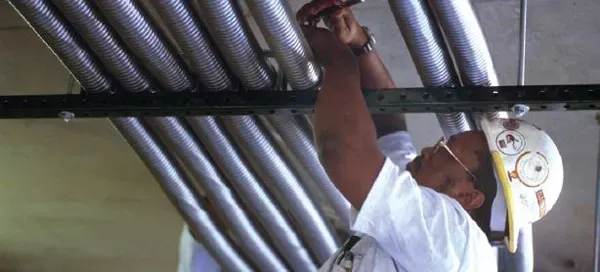Sep . 01, 2024 23:27 Back to list
three way air valve
Understanding the Three-Way Air Valve An Essential Component in Fluid Control Systems
The three-way air valve is a crucial device in various industrial applications, particularly in fluid control systems. Its primary function is to regulate the flow of air or gas in a circuit, allowing for precise control over the movement and distribution of these substances. This article delves into the structure, functions, applications, and advantages of three-way air valves, providing insights into why they are essential in modern industry.
Structure and Functionality
A three-way air valve typically features three ports one for the inlet (supply), one for the outlet (exhaust), and an additional port that serves as an alternate outlet or inlet, depending on the valve’s configuration. The most common designs include the normally closed (NC) and normally open (NO) configurations. In the NC configuration, the valve remains closed until activated, allowing for the pressurized air to flow through only when needed. Conversely, the NO valve allows air to flow freely unless it is mechanically or electrically triggered to close.
The operation of these valves can be manual, pneumatic, or electronic, depending on the application requirements. Automated systems frequently utilize solenoid or pneumatically actuated three-way valves, as these allow for rapid response times and enhanced precision, essential for maintaining optimal operation in industrial processes.
Applications
Three-way air valves have widespread applications across various industries. They are commonly used in pneumatic systems, automotive applications, manufacturing processes, and HVAC (Heating, Ventilation, and Air Conditioning) systems. In pneumatic applications, these valves can control the movement of actuators, cylinders, and other devices, enabling efficient automation.
three way air valve

For example, in an assembly line manufacturing setting, three-way valves can direct compressed air to different parts of a machine to perform various tasks, such as clamping, gripping, or positioning objects. In HVAC systems, they manage the airflow within ductwork, ensuring balanced distribution and climate control throughout a building.
Advantages
The advantages of using three-way air valves are numerous. Their ability to control flow direction and pressure precisely makes them invaluable in maintaining system efficiency. They help minimize energy consumption by ensuring that air is directed only where it is needed, reducing wastage. Additionally, the reliability and robustness of these valves contribute to the overall safety and longevity of fluid control systems.
Moreover, their versatility allows them to be used in a wide range of applications, making them a staple in industries such as pharmaceuticals, food processing, and manufacturing. With the ongoing advancements in technology, including smart sensors and IoT capabilities, three-way air valves are becoming increasingly sophisticated, further enhancing their functionality and efficiency.
Conclusion
In summary, the three-way air valve is a vital element in fluid control systems, offering unmatched versatility and efficiency across various applications. Understanding its structure and functions can help industries maximize their operational capabilities. As technology continues to evolve, the role of three-way air valves will undoubtedly expand, driving innovations in automation and fluid management. Whether in manufacturing, automotive, or HVAC systems, their significance cannot be overstated, making them an essential component for modern industrial applications.
Share
-
Reliable Wafer Type Butterfly Valves for Every IndustryNewsJul.25,2025
-
Reliable Flow Control Begins with the Right Ball Check ValveNewsJul.25,2025
-
Precision Flow Control Starts with Quality ValvesNewsJul.25,2025
-
Industrial Flow Control ReliabilityNewsJul.25,2025
-
Engineered for Efficiency Gate Valves That Power Industrial PerformanceNewsJul.25,2025
-
Empowering Infrastructure Through Quality ManufacturingNewsJul.25,2025